The Beginner's Guide to Building a Basic Skin Care Routine for Healthy Skin
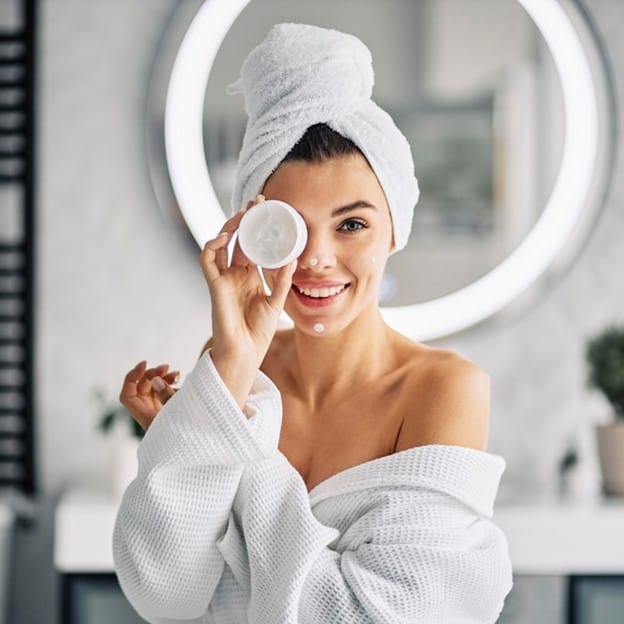
Discover the essential steps for a basic skin care routine, tailored to your skin type and concerns. Achieve healthy skin with our comprehensive skincare routine guide.
In a world filled with various skin care products and routines, it can be overwhelming to know what actually works in achieving healthy, glowing skin.
The reality is that everyone has different skin, meaning that what works for one individual may not necessarily work for another. However, there are some key components that a basic skin-care routine should include, such as moisturizing, exfoliating, and cleansing.
Many people wonder if practicing a basic skin-care routine really helps to achieve smoother, healthier skin. Will it help to keep you looking younger, especially when it comes to mature skin types.
In this article, we will guide you through the basics of skin care and show you how to create a simple and effective skincare routine for beginners.
This post includes affiliate links. If you choose to purchase through one of my links, I'd like to thank you for your support! I'm able to get a small commission, with no extra charges for you. To learn more, please check out the full disclosure with all the details.
How to Start a Skincare routine for Beginners
If you want to keep your skin healthy and beautiful, you need to have a skincare routine. According to a Cosmetologist,
A skincare routine is a series of steps that you follow every day to cleanse, moisturize, and protect your skin. Having a skincare routine can help you prevent skin problems, such as acne, dryness, sensitivity, and even skin cancer. It can also improve your skin tone, texture, and appearance.
Skincare is not a one-size-fits-all approach. It's about finding what works best for you and establishing a routine that addresses your skin's unique needs.
A good morning and evening routine with the right products can help make your skin look and feel its best, while neglecting a skin care routine can result in your skin not looking or feeling as healthy as it could be.
It's important to understand the natural processes of your skin and how to best support them. Each person's skin is unique and has its own set of needs. So, let's look into answering these basic questions:
- How do you start a skincare routine if you are a beginner?
- What are the essential steps and products that you need?
- How do you choose the best products for your specific type of skin and concerns?
Know Your Skin Type
The first step to start a skincare routine is to know your type of skin. Your skin type is determined by how much oil your skin produces, how sensitive it is, and how prone it is to breakouts. Knowing your type of skin can help you choose the right products and ingredients that suit your skin needs and goals.
There are four main type of skins: normal, dry, oily, and combination. Here is a brief description of each type of skin and how to identify it:
- Normal skin: is well-balanced, neither too oily nor too dry. It has a smooth and even texture, no visible pores, and no blemishes or redness. Normal skin is not very sensitive and can tolerate most products and ingredients.
- Dry skin: is lacking in oil and moisture. It has a rough and flaky texture, small pores, and fine lines and wrinkles. Dry skin is prone to irritation, itching, and inflammation. It needs products that can hydrate and nourish it, such as creams, oils, and serums.
- Oily skin: produces too much oil. It has a shiny and greasy appearance, and blackheads and pimples. The pores on oily skin tend to be enlarged. Oily skin is prone to clogged pores and acne. It needs products that can control the oil production and prevent breakouts, such as gels, lotions, and toners.
- Combination skin: is a mix of dry and oily areas. It has a normal or dry texture on the cheeks, and an oily texture on the T-zone (forehead, nose, and chin). Combination skin has different needs and concerns depending on the area. It needs products that can balance the oil and moisture levels, such as foams, fluids, and masks.
- Sensitive skin: Sensitive skin is easily irritated. Sensitive skin can become irritated from beauty products, being touched, hot water, alcohol consumption, or spicy foods. Because many things can irritate this type of skin, redness, itching, and burning are characteristic of this type of skin.
If you are not sure about your type of skin, you can do a simple test at home:
Choose Your Skin Care Products
The next step to start a skincare routine is to choose your skin care products. There are many types of skin care products available on the market, but you don’t need to buy them all.
For beginners, we recommend sticking to the three basic steps: cleanse, moisturize, and protect.
These are the essential steps that every type of skin and concern needs to follow. There are specific products to help you care for your skin at every step, depending on your type of skin.
Step 1 : Cleansing
A cleanser is a product that removes dirt, oil, makeup, and impurities from your skin.
It is the first step of your skincare routine and you should do it twice a day, in the morning and at night. To choose a cleanser, look for one that is gentle, non-irritating, and suitable for your type of skin.
Dry skin: select a creamy or milky cleanser that can hydrate and soothe your skin.
Oily skin: choose a gel or foam cleanser that can deep-clean and mattify your skin.
Combination skin: choose a foam or fluid cleanser that can balance and refresh your skin.
Sensitive skin: a fragrance-free and hypoallergenic cleanser that can calm and protect your skin is best for sensitive skin.
How to Choose the Best Cleanser for Your Type of Skin
Choosing the best cleanser for your type of skin can be tricky, as there are many factors to consider, such as the ingredients, the texture, the pH, and the fragrance of the product.
There are some general guidelines that can help you narrow down your options and find the right cleanser for your skin needs and goals. Here are some tips on how to choose the best cleanser for your type of skin:
Read the label
- The label of the product can tell you a lot about the cleanser, such as what it is formulated for, what it contains, and what it claims to do.
- Look for words that indicate the type of skin or concern that the cleanser is designed for, such as “for oily skin”, “for dry skin”, “for sensitive skin”, “hydrating”, “purifying”, “soothing”, etc.
- You can also look for the ingredients list and check if the cleanser has any ingredients that are beneficial or harmful for your type of skin. For example, if you have dry skin, you may want to look for cleansers that have hydrating ingredients, such as hyaluronic acid, or ceramides, and avoid cleansers that have drying ingredients, such as alcohol, sulfates, or salicylic acid.
- If you have oily skin, you may want to look for cleansers that have oil-controlling ingredients, such as clay, charcoal, or niacinamide.
- Avoid cleansers that have comedogenic ingredients, such as coconut oil, shea butter, or mineral oil.
Test the texture
- The texture of the cleanser can also affect how it cleanses and feels on your skin.
Generally, the thicker and creamier the texture, the more moisturizing and gentle the cleanser is, while the thinner and lighter the texture, the more cleansing and refreshing the cleanser is.
- You can test the texture of the cleanser by applying a small amount on the back of your hand and rubbing it gently. See how it lathers, how it rinses off, and how it leaves your skin feeling.
- Dry skin: you may want to choose a cleanser that has a creamy or milky texture that can hydrate and soothe your skin.
- Oily skin: you may want to choose a cleanser that has a gel or foam texture that can deep-clean and mattify your skin.
- Combination skin: you may want to choose a cleanser that has a foam or fluid texture that can balance and refresh your skin.
- Sensitive skin: you may want to choose a cleanser that has a fragrance-free and hypoallergenic texture that can calm and protect your skin.
Check the pH
- The pH of the cleanser can also influence how it affects your skin’s barrier function and acid mantle.
The pH scale ranges from 0 to 14, where 0 is the most acidic, 7 is neutral, and 14 is the most alkaline. Your skin’s natural pH is slightly acidic, around 5.5, which helps it maintain its moisture and fight off bacteria and fungi. When you use a cleanser that has a pH that is too high or too low, it can disrupt your skin’s pH balance and cause dryness, irritation, or infection. Ideally, you want to choose a cleanser that has a pH that is close to your skin’s pH, or slightly lower, around 4.5 to 6. You can check the pH of the cleanser by using a pH test strip or a digital pH meter, or by looking for the information on the product’s website or packaging.
- Dry skin: you may want to choose a cleanser that has a pH that is around 5.5 to 6, which can hydrate and protect your skin.
- Oily skin: you may want to choose a cleanser that has a pH that is around 4.5 to 5.5, which can cleanse and regulate your skin.
- Combination skin: you may want to choose a cleanser that has a pH that is around 5 to 5.5, which can balance and refresh your skin.
- Sensitive skin: you may want to choose a cleanser that has a pH that is around 5 to 6, which can calm and protect your skin.
1. Start by washing your hands thoroughly. Clean hands = a clean face!
2. Wet your face with some warm water. It helps to open up your pores and prep your skin for cleansing.
3. Now, take a small amount of your favorite facial cleanser and put it on your fingertips. Just a little goes a long way!
4. Gently apply the cleanser to your face using circular motions. Be sure to give some extra TLC to areas that tend to get oily, like the T-zone.
5. Time to rinse! Use lukewarm water to wash away the cleanser from your face. Remember, you want to rinse thoroughly but not use water that's too hot or too cold.
6. After rinsing, pat your face dry with a clean towel. Avoid rubbing your skin too harshly, as it can cause irritation.
And voila! You're all set with a fresh, clean face. Keep up with this routine daily for the best results. Happy cleansing!
Double cleansing
If you're looking to give your skin an extra thorough cleanse, you might want to try double cleansing. It's a two-step process that involves using an oil-based cleanser to remove makeup, sunscreen, and excess oil, followed by a water-based cleanser to get rid of any remaining sweat and dirt.
You only need to do double cleansing in the evening, as it helps to remove the dirt and pollution that have built up on your skin throughout the day. It's not necessary to do it in the morning.
By following these tips, you can choose the best cleanser for your type of skin and enjoy a clean, healthy, and beautiful skin.😊
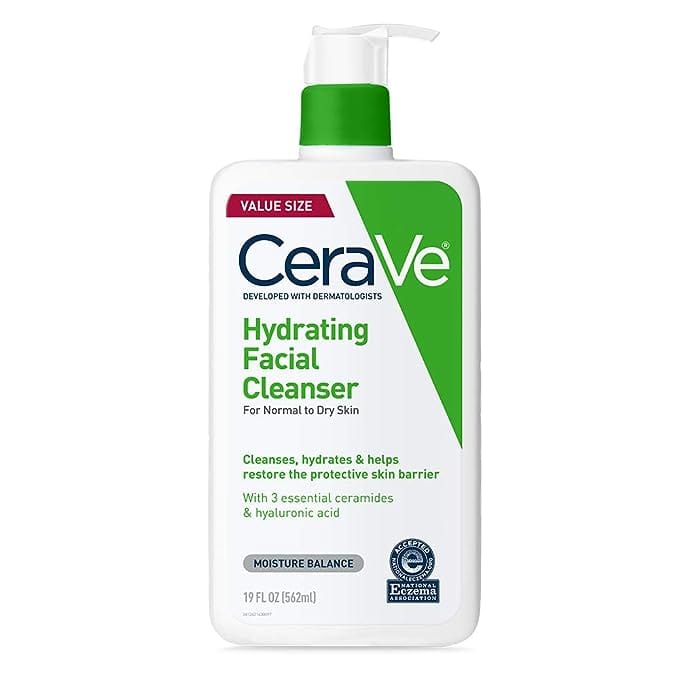
CeraVe Hydrating Facial Cleanser, 19 Fluid Ounce
Moisturizing Non-Foaming Face Wash with Hyaluronic Acid, Ceramides and Glycerin . Fragrance Free Paraben Free. Suitable for dry skin, sensitive skin, oily skin, acne-prone, and more.
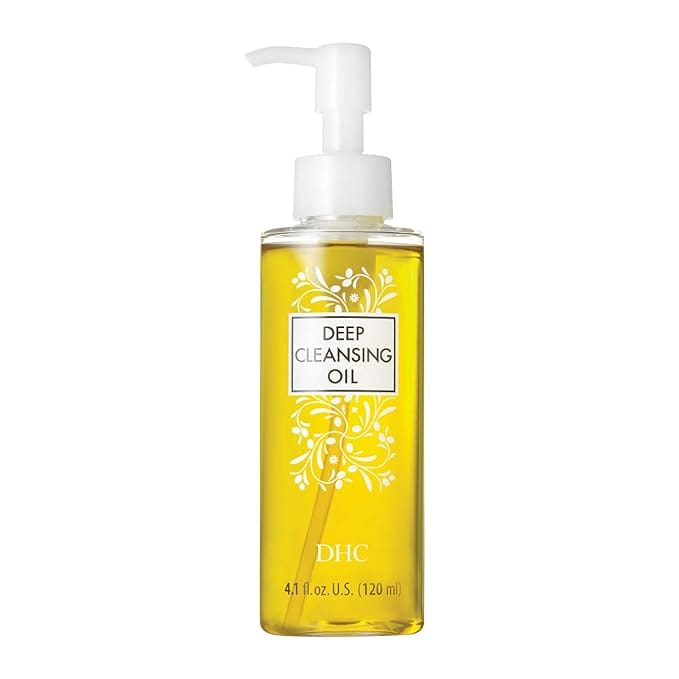
DHC Deep Cleansing Oil, 4.1 Fl Oz
Botanical formulation features antioxidant-rich organic olive oil and vitamin E to hydrate, soften and protect against free radical damage, and rosemary leaf oil to invigorate and refresh. Ideal for all skin types.
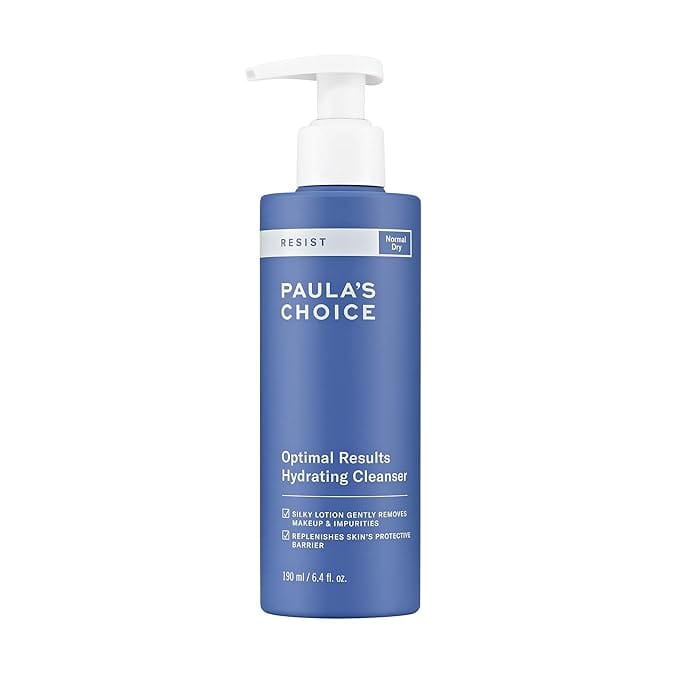
Paula's Choice RESIST Optimal Results Hydrating Cleanser, , 6.4 Oz
Green Tea & Chamomile, Anti-Aging Face Wash, Dry Skin, Sensitive, Normal skin. Replenishes moisture and helps to preserve skin's healthy barrier while effectively cleansing skin. Use twice daily as part of your morning and evening skin care routines along with your favorite Paula's Choice toner, exfoliator, serums, spot treatments, and moisturizer with SPF for daytime wear.

CeraVe SA Cleanser, 8 Oz
Salicylic Acid Cleanser with Hyaluronic Acid, Niacinamide & Ceramides. BHA Exfoliant for Face. Fragrance Free Non-Comedogenic . Clear gel transforms into a foaming face wash as you lather to cleanse, exfoliate, and hydrate skin without leaving a stripped & tight feeling for Normal Skin

Aveeno Calm + Restore Nourishing Oat Face Cleanser, 7.8 fl. oz
For Sensitive Skin, Gentle Milky Cleanser with Nourishing Oat & Feverfew, to Preserve Skin's Moisture Barrier, Fragrance-Free. For Sensitive Skin
Step 2 : Toning
A toner is a skin care product that is used to cleanse, balance, and refresh the skin after washing. A toner can also help prepare the skin for the next steps of your skincare routine, such as moisturizer,as serum or sunscreen.
Not all toners are the same, and you need to choose one that suits your type of skin and needs. Here are some tips on how to choose the best toner for your type of skin:
- Normal skin: If you have normal skin, you can choose a toner that is gentle, hydrating, and refreshing. Look for toners that contain ingredients such as rose water, aloe vera, cucumber, or green tea, which can soothe and moisturize your skin. Avoid toners that contain alcohol, which can dry out your skin.
- Dry skin: If you have dry skin, you need a toner that is hydrating and nourishing. Look for toners that contain ingredients such as glycerin, hyaluronic acid, ceramides, or honey, which can hydrate and repair your skin. Avoid toners that contain alcohol, sulfates, or salicylic acid, which can strip your skin of its natural oils.
- Oily skin: If you have oily skin, you need a toner that is cleansing and oil-controlling. Look for toners that contain ingredients such as witch hazel, clay, charcoal, or niacinamide, which can remove excess oil and prevent breakouts. Avoid toners that contain alcohol, mineral oil, or lanolin, which can clog your pores and cause more oiliness.
- Combination skin: If you have combination skin, you need a toner that is balancing and refreshing. Look for toners that contain ingredients such as chamomile, lavender, or grapefruit, which can balance and tone your skin. Avoid toners that contain alcohol, which can dry out your dry areas and irritate your oily areas.
- Sensitive skin: If you have sensitive skin, you need a toner that is calming and soothing. Look for toners that contain ingredients such as oatmeal, calendula, or chamomile, which can calm and protect your skin. Avoid toners that contain alcohol, fragrance, or artificial colors, which can trigger allergic reactions and inflammation.
How to Choose the Best Toner for Your Type of Skin
Choosing the best toner for your skin type can be tricky, as different toners have different ingredients and benefits. Here are some general tips to help you find the right toner for you:
- Dry skin: look for toners that are hydrating and moisturizing, such as those with glycerin, hyaluronic acid, rose water, or aloe vera. Toners that contain alcohol dry out your skin and should be avoided.
- Oily skin: look for toners that are refreshing and gentle, such as those with salicylic acid, glycolic acid, or tea tree oil. These toners can help exfoliate and unclog your pores, reduce excess oil, and prevent breakouts. You will need to avoid harsh or drying toners as they can trigger more oil production.
- Combination skin: look for toners that are balancing and suitable for both oily and dry areas of your face, such as those with witch hazel, calendula, or chamomile. These toners can help tone and soothe your skin, without stripping it of its natural moisture. Avoid very rich toners or those that are too astringent as they will create an imbalance and skin irritation.
- Sensitive skin: look for toners that are calming and gentle, such as those with cucumber, green tea, or lavender. These toners can help reduce inflammation, redness, and itching, while providing hydration and protection. Sensitive skin does not respond well to toners that contain alcohol or fragrance and artificial colors to avoid sensitivity reaction.
- You can also test a toner on a small patch of your skin before using it on your whole face, to see how your skin reacts to it.
- Always check the label instructions and tone your face accordingly.
I hope this helps you choose the best toner for your skin type. 😊

COSRX Full Fit Propolis Synergy Toner, 5.07 fl.oz
Korean Skincare, Instant Moisture Boosting Toner, Propolis 72.6% Honey 10.7% Panthenol. Anti-aging and Skin Balancing for Sensitive Skin

innisfree Green Tea Balancing Toner
Soothe, Hydrate, Helps Balance Skin's Hydration Levels, This quick-absorbing toner helps balance the skin's hydration levels, and replenishes hydration. Combination Skin
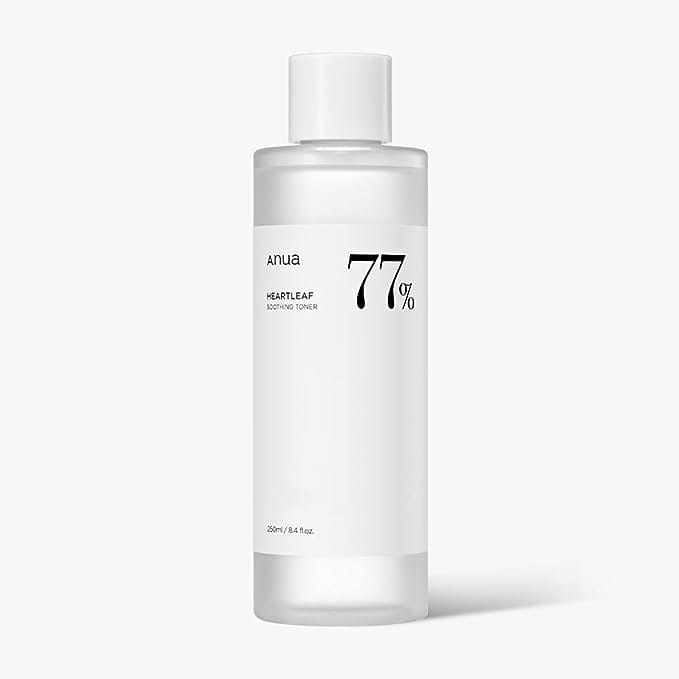
Anua Heartleaf 77% Soothing Tone,r 8.45 fl.oz.
IpH 5.5 Trouble Care, Calming Skin, Refreshing, Hydrating, Purifying, Cruelty Free, Vegan. All Skin Types

CeraVe Hydrating Toner, 6.8 Fl Oz
Non-Alcoholic with Hyaluronic Acid, Niacinamide, and Ceramides for Sensitive Dry Skin, Fragrance-Free Non Comedogenic, Sensitive, Dry, Normal Skin Types

I'm From Rice Toner, 5.07 Fl Oz
77.78% Rice Extract from Korea, Glow Essence with Niacinamide, Hydrating for Dry Skin, Vegan, Alcohol Free, Fragrance Free, Peta Approved, K Beauty Toner
Step 3 : Moisturizing
A moisturizer is a product that adds moisture and nutrients to your skin. It is the second step of your skincare routine and you should do it twice a day, after cleansing.
To choose a moisturizer, look for one that is lightweight, non-comedogenic, and suitable for your type of skin.
- Dry skin: Choose a rich cream or oil that can hydrate and nourish your skin.
- Oily skin: Choose a light lotion or gel that can moisturize and regulate your skin.
- Combination skin: Choose a fluid or serum that can hydrate and balance your skin.
- Sensitive skin: Choose a fragrance-free and hypoallergenic moisturizer that can calm and protect your skin.
How to Choose the Best Moisturizing Cream for Your Type of Skin
Moisturizing your skin is an important step in your skincare routine, as it can help prevent dryness, flaking, cracking, and irritation. Moisturizing creams are thicker and richer than lotions or gels, and they can provide more hydration and nourishment for your skin.
Not all moisturizing creams are created equal, and you need to choose one that matches your type of skin and concerns. Here are some tips on how to choose the best moisturizing cream for your type of skin:
Read the label:
- The label of the product can tell you a lot about the moisturizing cream, such as what it is formulated for, what it contains, and what it claims to do.
- Look for words that indicate the type of skin or concern that the moisturizing cream is designed for, such as “for dry skin”, “for oily skin”, “for sensitive skin”, “anti-aging”, “brightening”, “firming”, etc. You can also look for the ingredients list and check if the moisturizing cream has any ingredients that are beneficial or harmful for your type of skin.
- Dry skin: you may want to look for moisturizing creams that have hydrating ingredients, such as hyaluronic acid, ceramides, or shea butter, and avoid moisturizing creams that have drying ingredients, such as alcohol, retinol, or salicylic acid.
- Oily skin: you may want to look for moisturizing creams that have oil-controlling ingredients, such as niacinamide, zinc, or clay, and avoid moisturizing creams that have comedogenic ingredients, such as coconut oil, mineral oil, or lanolin.
- Combination skin: look for a lightweight formula that absorbs easily into the skin without clogging pores or causing excess oiliness. Ingredients like hyaluronic acid can help to hydrate the dry areas without adding extra shine to the oily areas. Additionally, opt for a moisturizer that offers oil control properties to keep your skin looking fresh and matte throughout the day.
- Sensitive skin: choose a moisturizing cream that is gentle and soothing. Look for products that are fragrance-free and hypoallergenic to reduce the risk of irritation. Ingredients like aloe vera, chamomile, and oat extract are known for their calming properties and can help to alleviate any redness or sensitivity. It's also important to avoid harsh chemicals and potential allergens, so be sure to read the ingredient list carefully before making a purchase.
Test the texture
- The texture of the moisturizing cream can also affect how it feels and works on your skin.
- Generally, the thicker and richer the texture, the more moisturizing and occlusive the moisturizing cream is, while the thinner and lighter the texture, the more hydrating and humectant the moisturizing cream is.
- You can test the texture of the moisturizing cream by applying a small amount on the back of your hand and rubbing it gently. See how it spreads, how it absorbs, and how it leaves your skin feeling.
- Dry skin: you may want to choose a moisturizing cream that has a thick and creamy texture that can hydrate and seal your skin.
- Oily skin: you may want to choose a moisturizing cream that has a light and whipped texture that can moisturize and regulate your skin.
- Combination skin: you may want to choose a moisturizing cream that has a medium and smooth texture that can hydrate and balance your skin.
- For sensitive skin, you may want to choose a moisturizing cream that has a gentle and soothing texture that can calm and protect your skin.
Check the product reviews
The reviews of the product can also give you an idea of how the moisturizing cream performs and suits different type of skins and concerns. You can read the reviews of the product on the product’s website, online retailers, or beauty blogs and magazines.
- Look for reviews that are honest, detailed, and relevant to your type of skin and concerns.
- Dry skin: you may want to look for reviews that mention how the moisturizing cream helped improve their skin’s hydration, softness, and elasticity.
- Oily skin: you may want to look for reviews that mention how the moisturizing cream helped control their skin’s oiliness, shine, and breakouts.
- Combination skin: you may want to look for reviews that mention how the moisturizing cream helped balance their skin’s oil and moisture levels.
- Sensitive skin: you may want to look for reviews that mention how the moisturizing cream helped reduce their skin’s redness, itching, and irritation.
I hope this helps you expand your article and find your perfect moisturizing cream! 😊

Neutrogena Hydro Boost, 1.7 oz
Hyaluronic Acid Hydrating Face Moisturizer Gel-Cream to Hydrate and Smooth Extra-Dry Skin
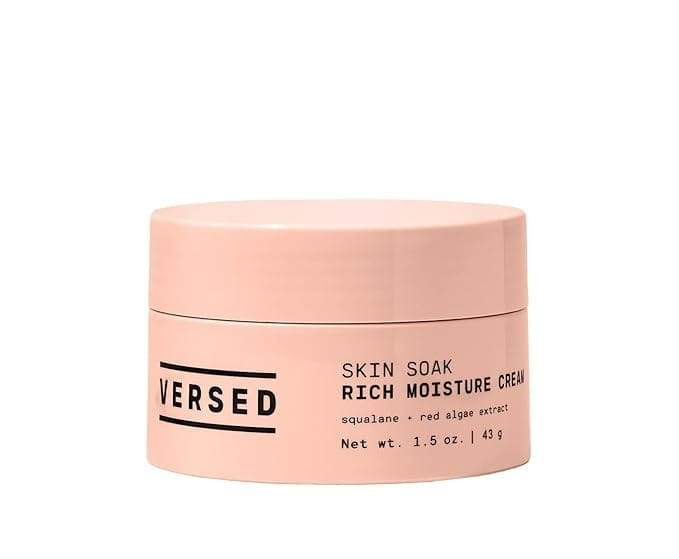
Versed Skin Soak Rich Moisture Face Cream (1.5 oz)
Daily Facial Moisturizer with Squalane Oil, Hyaluronic Acid, Vitamin E + Red Algae - Smooth, Non-Greasy Night Cream for Aging, Dry Skin . Vegan

COSRX Hyaluronic Acid Moisturizing Cream, 3.53 oz
Korean Skin Care,Long-lasting Hydration, Rich Moisturizer for Sensitive Skin
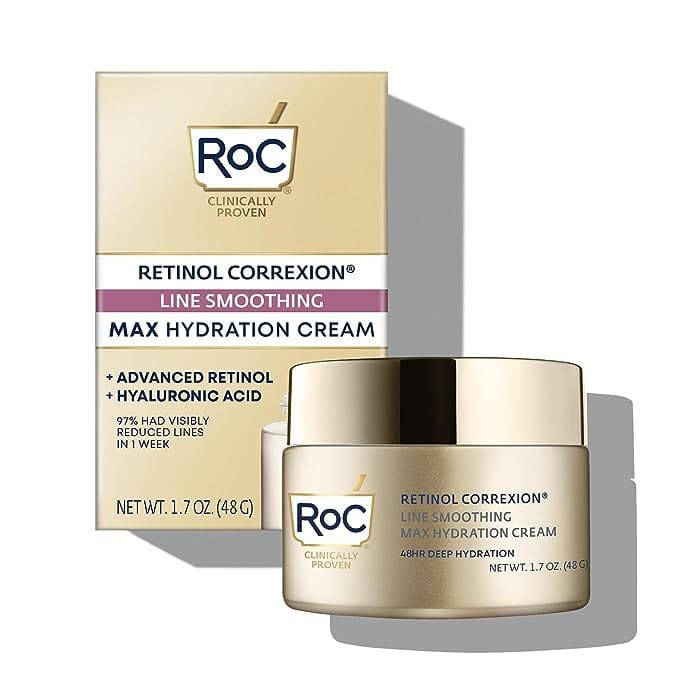
RoC Retinol Correxion Max Daily Hydration , 1.7 Ox
Anti-Aging Face Moisturizer with Hyaluronic Acid, Treat Fine Lines, Dark Spots, Post-Acne Scars, Oil-free and non-comedogenic formula won't clog pores.

MAREE Night Cream, 1.7oz
Collagen Anti Wrinkle Moisturizer for Skin with Hydrating & Face Lift Effect - Day & Night Time Facial Cream with Hyaluronic Acid & Retinol - Anti Aging Cream for Face
Step 1 : Sunscreen
A sunscreen is a product that protects your skin from the harmful effects of the sun, such as sunburn, premature aging, and skin cancer. It is the third and final step of your skincare routine and you should do it every day, before going outside.
- To choose a sunscreen, look for one that has a broad-spectrum protection, meaning that it blocks both UVA and UVB rays, and a sun protection factor (SPF) of at least 30.
- For dry skin, choose a creamy or lotion sunscreen that can hydrate and shield your skin.
- For oily skin, choose a gel or spray sunscreen that can absorb and cool your skin.
- For combination skin, choose a fluid or powder sunscreen that can blend and mattify your skin.
- Sensitive skin: choose a mineral or physical sunscreen that can reflect and soothe your skin.
How to Choose the Best Sunscreen for Your Type of Skin
Sunscreen is an essential product for protecting your skin from the harmful effects of ultraviolet (UV) rays, such as sunburn, premature aging, and skin cancer.
Sunscreens are not all the same, and different skin types may require different kinds of sunscreens. Here are some tips on how to choose the best sunscreen for your skin type.
- Dry skin: If you have dry skin, you need a sunscreen that can moisturize and nourish your skin, as well as shield it from UV rays. Look for sunscreens that have hydrating ingredients, such as glycerin, hyaluronic acid, or ceramides. Avoid sunscreens that contain alcohol, as they can dry out your skin even more. Sunscreens in cream or lotion formula are better at moisturizing dry skin hat sprays or gels.
- Oily skin: If you have oily skin, you need a sunscreen that can control excess oil production, prevent clogged pores, and reduce shine, without drying out your skin. Look for sunscreens that have oil-free, non-comedogenic, and mattifying formulas, such as gels, fluids, or powders. You may also benefit from sunscreens that contain ingredients that can exfoliate and unclog your pores, such as salicylic acid, glycolic acid, or niacinamide.
- Combination skin: If you have combination skin, you need a sunscreen that can balance the oiliness and dryness of different areas of your face, such as the T-zone and the cheeks. Look for sunscreens that have lightweight, gentle, and non-irritating formulas, such as lotions, fluids, or sticks. You may also benefit from sunscreens that contain ingredients that can soothe and tone your skin, such as witch hazel, chamomile, or calendula.
- Sensitive skin: If you have sensitive skin, you need a sunscreen that can protect your skin from UV rays, without causing allergic reactions, sensitivity, or inflammation. Look for sunscreens that have hypoallergenic, fragrance-free, and mineral-based formulas, such as zinc oxide or titanium dioxide. You may also benefit from sunscreens that contain ingredients that can calm and hydrate your skin, such as cucumber, green tea, or aloe vera.
In addition to choosing the right sunscreen for your skin type, you should also consider other factors, such as:
- The sun protection factor (SPF), the broad-spectrum protection, and the water resistance of the sunscreen. The SPF indicates how well the sunscreen can protect your skin from UVB rays, which are responsible for sunburn and skin cancer. The broad-spectrum protection indicates how well the sunscreen can protect your skin from UVA rays, which are responsible for aging and wrinkles.
- The water resistance indicates how long the sunscreen can stay effective on your skin after exposure to water or sweat. The FDA recommends using a sunscreen that has at least SPF 15, broad-spectrum protection, and water resistance for at least 40 minutes.
- You should also apply your sunscreen correctly and regularly to get the most benefits from it. You should apply your sunscreen at least 15 minutes before going outside, and reapply it every two hours, or more often if you sweat or swim.
- Use about half a teaspoon of sunscreen for your face and neck, and about one ounce of sunscreen for your whole body. Other sun protection measures, such as wearing a hat, sunglasses, and protective clothing, and avoiding the sun during peak hours helps for better protection.
By following these tips, you can choose the best sunscreen for your skin type, and enjoy the sun safely and confidently. 😊
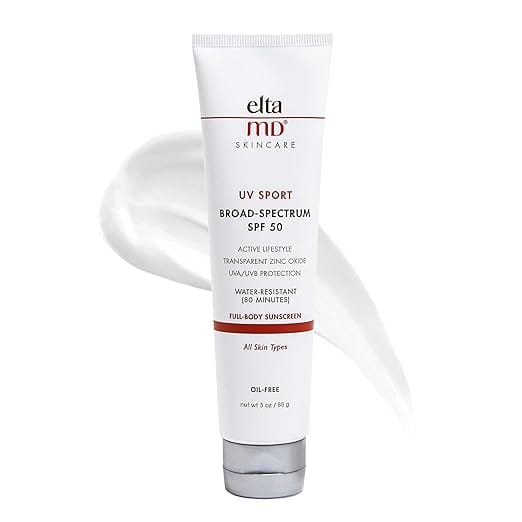
EltaMD UV Sport Body Sunscreen, SPF 50
Sport Sunscreen Lotion, Sweat Resistant and Water Resistant up to 80 Minutes, Formulated with Zinc Oxide
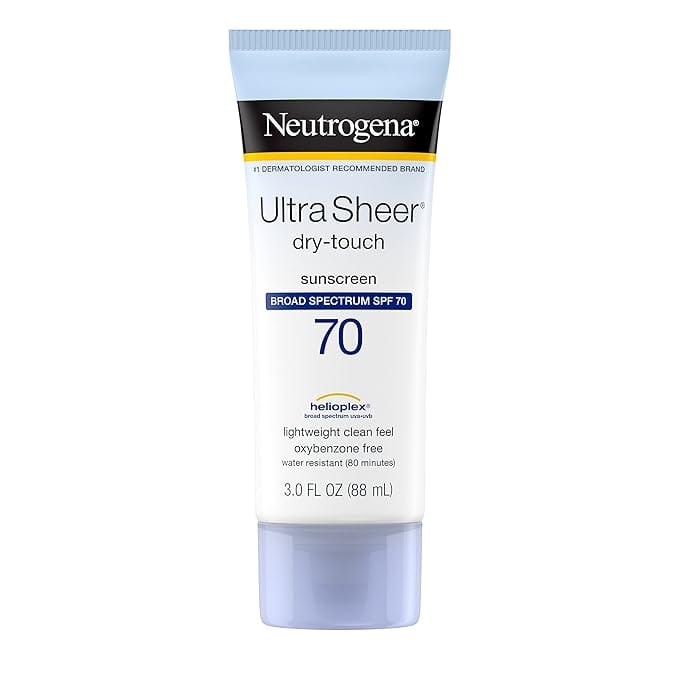
Neutrogena Ultra Sheer Dry-Touch, 3 Fl Oz
Water Resistant and Non-Greasy Sunscreen Lotion with Broad Spectrum SPF 70
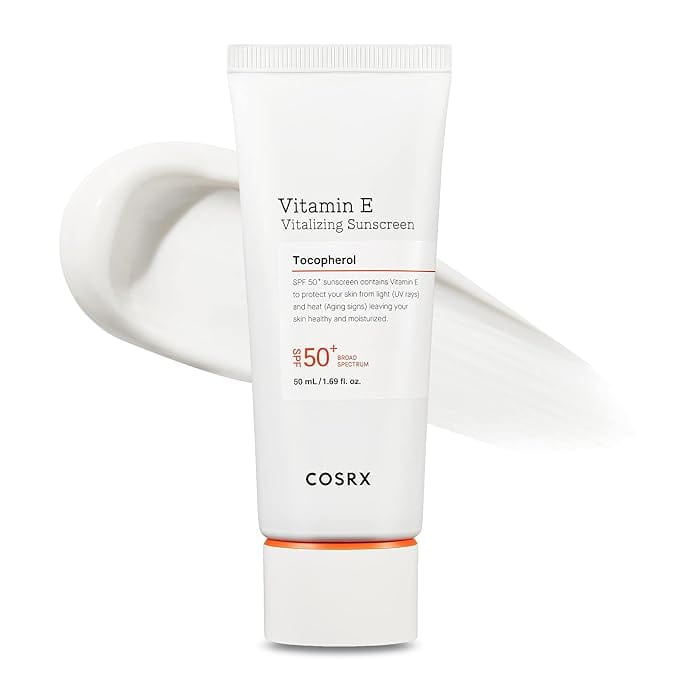
COSRX Daily SPF 50, 1.69 Oz
Vitamin E Vitalizing Sunscreen, OTC Broad Spectrum UVA & UVB Protection, Lightweight & No White Cast, Invisible Semi Matte Finish, Sebum Balancing, Reef Friendly, Korean Skincare
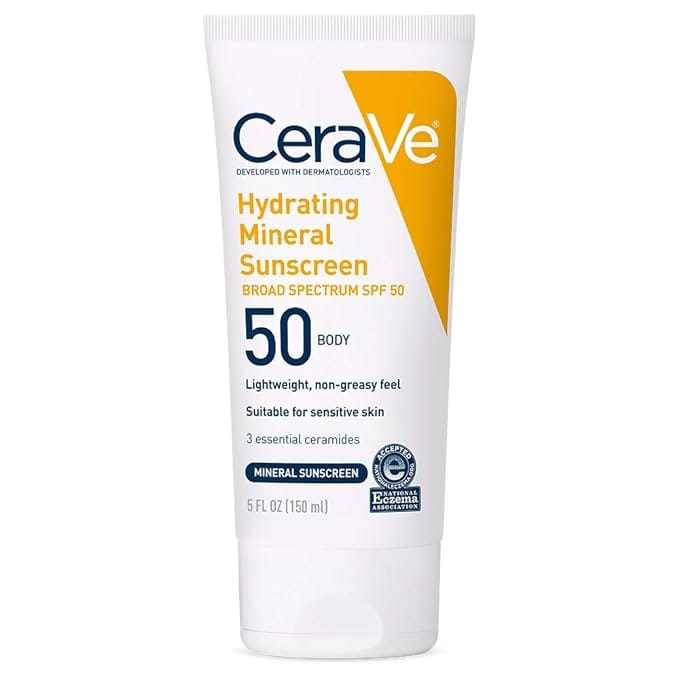
CeraVe 100% Mineral Sunscreen SPF 50, 5 oz
Body Sunscreen with Zinc Oxide & Titanium Dioxide for Sensitive Skin With Hyaluronic Acid and Ceramides
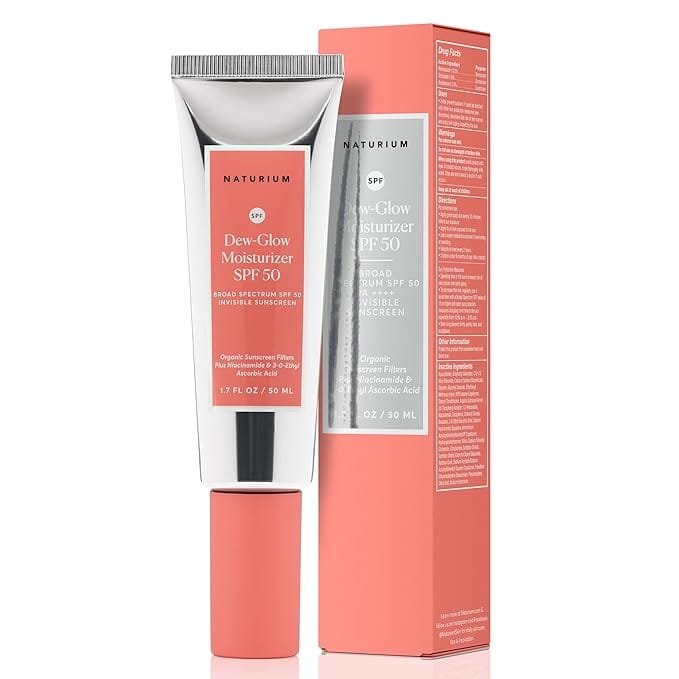
Naturium Dew-Glow Moisturizer SPF 50 , 1.7 oz
PA++++, Daily Moisturizing Sunscreen & Face Primer, Skin Protector with Dewy Finish apply invisibly on all skin tones
Step 5 : Serums
What are Serums and Why You Need Them
Serums are skin care products that are designed to deliver high concentrations of active ingredients to your skin. Unlike moisturizers, which create a barrier on top of your skin to lock in moisture, serums are made of smaller molecules that can penetrate deeper into your skin and target specific concerns, such as wrinkles, dark spots, acne, or dullness.
Serums can be used by anyone who wants to improve their skin’s appearance and health, regardless of their type of skin or age. Note that serums are not meant to replace your moisturizer, but rather to enhance it.
Serums come in different forms, such as liquids, gels, or oils, and they can have different textures, such as light, silky, or sticky. Serums can also have different ingredients, such as antioxidants, peptides, retinoids, or acids, depending on their purpose and function.
Use serum before your moisturizer, so that you can boost the effectiveness of both products and give your skin an extra dose of hydration and nutrients.
Some serums are meant to be used in the morning, some at night, and some both. The key is to choose a serum that suits your type of skin and needs, and to use it correctly and consistently.
How to Choose the Best Serums for Your Skin Type
Choosing the best serums for your type of skin can be challenging, as there are many options available on the market, and each one claims to have different benefits and results.
There are some general guidelines that can help you narrow down your choices and find the right serums for your skincare goals. Here are some tips on how to choose the best serums for your type of skin within your skincare routine:
Know your skin type and skin concerns
Before you buy any serum, you need to know your type of skin and what issues you want to address.
- Dry Skin: you may want to look for a serum that can hydrate and nourish your skin. If you have oily skin, you may want to look for a serum that can control the oil production and prevent breakouts. Look for serums that have hydrating ingredients, such as hyaluronic acid, glycerin, or ceramides, and avoid serums that have drying ingredients, such as alcohol, retinol, or salicylic acid. Choose a serum that has a creamy or oily texture that can hydrate and seal your skin.
- Combination skin: you may want to look for a serum that can balance and refresh your skin. You may want to choose a serum that has a gel or liquid texture that can moisturize and regulate your skin.
- Sensitive skin: you may want to look for a gentle serum that can calm and protect your skin.
- Oily skin: you may want to look for serums that have oil-controlling ingredients, such as niacinamide, zinc, or clay, and avoid serums that have comedogenic ingredients, such as coconut oil, mineral oil, or lanolin. You may want to choose a serum that has a fluid or serum texture that can hydrate and balance your skin.
- Aging skin: you may want to look for a serum that can reduce the signs of aging, such as wrinkles, sagging, or discoloration.
Check the ingredients list on the label
The label and the ingredients list of the serum can tell you a lot about the product, such as what it is formulated for, what it contains, and what it claims to do.
Look for words that indicate the type of skin or concern that the serum is designed for, such as “for dry skin”, “for oily skin”, “for sensitive skin”, “anti-aging”, “brightening”, “firming”, etc. You can also look for the ingredients list and check if the serum has any ingredients that are beneficial or harmful for your type of skin.
Test the texture and the scent
The texture and the scent of the serum can also affect how it feels and works on your skin. Generally, the lighter and thinner the texture, the more easily the serum can be absorbed by your skin, while the thicker and richer the texture, the more occlusive and moisturizing the serum is.
- You can test the texture of the serum by applying a small amount on the back of your hand and rubbing it gently. See how it spreads, how it absorbs, and how it leaves your skin feeling.
- The scent of the serum can also influence your preference and enjoyment of the product. Some serums have natural or artificial fragrances that can make them smell pleasant or unpleasant, depending on your taste. Others have no fragrance at all, which can be preferable for sensitive skin. You can test the scent of the serum by smelling it from the bottle or from your hand. See if you like the smell, if it is too strong or too faint, and if it lingers or fades away.
- Dry skin: you may want to choose a serum that has a mild or pleasant fragrance that can enhance your mood and relaxation.
- Oily skin: you may want to choose a serum that has a fresh or citrusy fragrance that can energize and refresh your skin.
- Combination skin: you may want to choose a serum that has a neutral or floral fragrance that can suit both your dry and oily areas.
- Sensitive skin: you may want to choose a serum that has no fragrance or a very subtle fragrance that can avoid irritation and allergy.
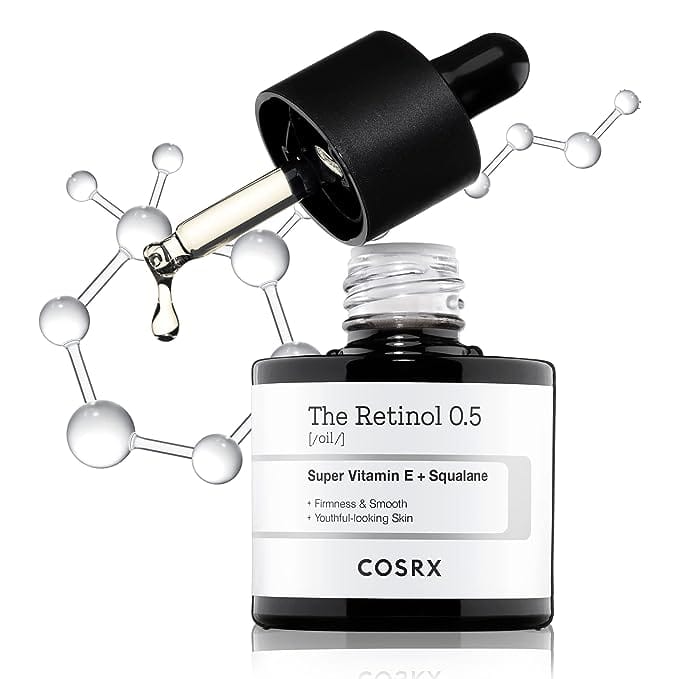
COSRX Retinol 0.5 Oil, Anti-aging Serum
0.5% Retinoid Treatment for Face, Reduce Wrinkles, Fine Lines, & Signs of Aging, Gentle Skincare for Day & Night, Not Tested on Animals, Korean Skincare

Bliss Bright Idea Vitamin C + Tri-Peptide Brightening Serum, 1 Fl Oz
Hydrating Illuminating Face Cream with Peptides - Clean - Vegan & Cruelty-Free

The Ordinary Face Serum Set! Caffeine Solution
5%+EGCG! Hyaluronic Acid 2%+B5! Niacinamide 10% + Zinc 1%! Help Fight Visible Blemishes And Improve The Look Of Skin Texture and Radiance
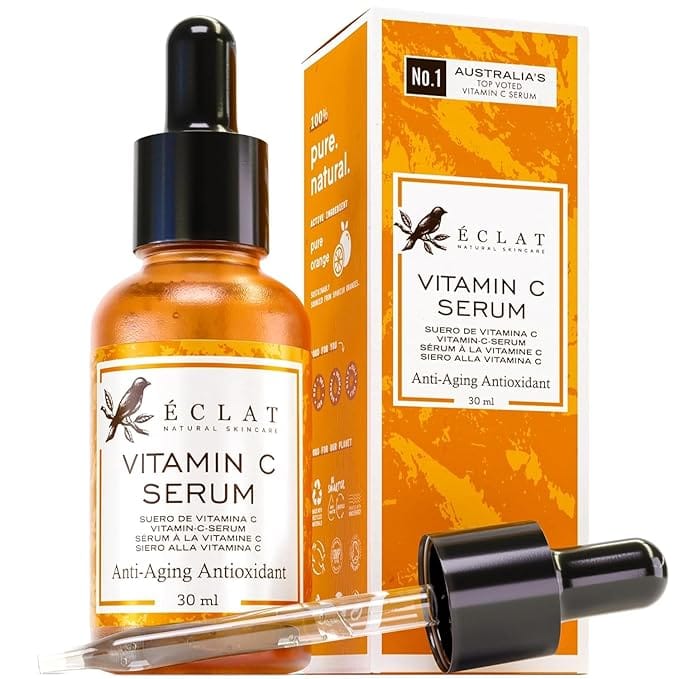
Vitamin C Face Serum
Hyaluronic Acid, Ferulic Acid, & Vit E Anti Aging Facial Brightening Serum for Skin Care. Timeless Pure Serum , Vit C Serum Oil
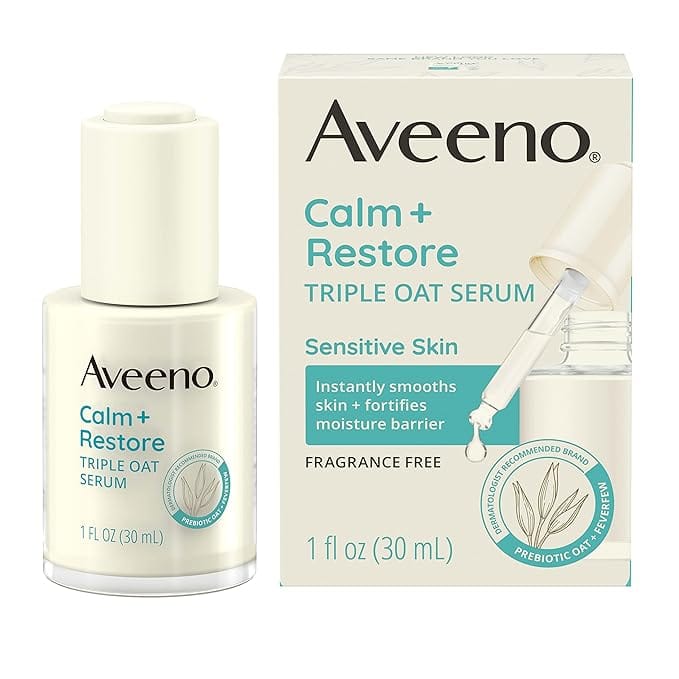
Aveeno Calm + Restore Triple Oat Hydrating Face Serum , 1 fl. oz
For Sensitive Skin, Gentle, Lightweight Facial Serum Instantly Smooths Skin, Fast-Absorbing, Hypoallergenic & Fragrance-Free
Step 6 : The difference between a Morning Skin Routine and an Evening Skin Routine
If you are serious about taking care of your skin, you may have wondered if you need different skin care routines for the morning and the evening. The answer is yes, because your skin has different needs and challenges depending on the time of day.
In this section,we will explain the main differences between a morning skin routine and an evening skin routine, and give you some tips on how to optimize them for your skin type.
What is the purpose of a morning skin routine?
A morning skin routine is all about preparing your skin for the day ahead. Your skin will be exposed to various environmental factors, such as sunlight, pollution, dust, and temperature changes, that can damage your skin and cause premature aging, dryness, irritation, and breakouts.
Your morning skin routine should focus on two main goals: cleansing and protecting.
Morning Cleansing
Cleansing your skin in the morning is important to remove any dirt, oil, or residue that may have accumulated on your skin overnight. It also helps to refresh your skin and make it ready for the next steps. Depending on your skin type, you can use a gentle, hydrating, or exfoliating cleanser to suit your needs.
Skin Protecting
Protecting your skin in the morning is essential to prevent the harmful effects of UV rays, such as sunburn, wrinkles, dark spots, and skin cancer. You should always apply a sunscreen with at least SPF 30 and broad-spectrum protection, which means it blocks both UVA and UVB rays. You can also look for a sunscreen that has additional benefits, such as moisturizing, mattifying, or tinted formulas, depending on your preferences.
What is the purpose of an evening skin routine?
An evening skin routine is all about repairing and restoring your skin after a long day. Your skin has been exposed to various stressors, such as UV rays, pollution, makeup, and sweat, that can impair your skin barrier and cause inflammation, dehydration, and dullness.
Your evening skin routine should focus on two main goals: cleansing and nourishing.
Cleansing
Cleansing your skin in the evening is important to remove all the impurities and makeup that may have accumulated on your skin throughout the day. It also helps to prepare your skin for the next steps.
Depending on your skin type and the amount of makeup you wear, you may need to use a double-cleansing method, which involves using an oil-based cleanser followed by a water-based cleanser.
The oil-based cleanser dissolves makeup, sunscreen, and sebum, while the water-based cleanser removes any remaining dirt, bacteria, and dead skin cells. For example, if you wear heavy makeup, you can use an oil-based cleanser, such as Bioderma Sensibio H2O Micellar Water, followed by a water-based cleanser, such as Cetaphil Gentle Skin Cleanser.
Nourishing and Repairing Skin
Nourishing your skin in the evening is essential to replenish your skin’s moisture and nutrients, and to support your skin’s natural repair process that occurs during sleep.
You should apply a moisturizer that suits your skin type and concerns, and that contains ingredients that can hydrate, soothe, and regenerate your skin. You can also use other products, such as serums, masks, or eye creams, that target specific issues, such as aging, pigmentation, or sensitivity.
For example, if you have dry or mature skin, you can use a rich moisturizer that contains anti-aging ingredients, such as retinol, hyaluronic acid, or peptides, such as Olay Regenerist Micro-Sculpting Cream. If you have oily or acne-prone skin, you can use a lightweight moisturizer that contains anti-inflammatory and anti-bacterial ingredients, such as niacinamide, salicylic acid, or tea tree oil, such as The Ordinary Natural Moisturizing Factors + HA.
As you can see, a morning skin routine and an evening skin routine have different purposes and require different products. By following these tips, you can optimize your skin care routines for your skin type and goals, and achieve healthy, beautiful, and glowing skin. 😊

Retinol Anti-Aging Starter Kit
The Original Retinol For a Younger Look, 4 Conveniently Sized Products Perfect For Travel or First Time Try – Cleanse, Treat, Repair & Hydrate On-The-Go
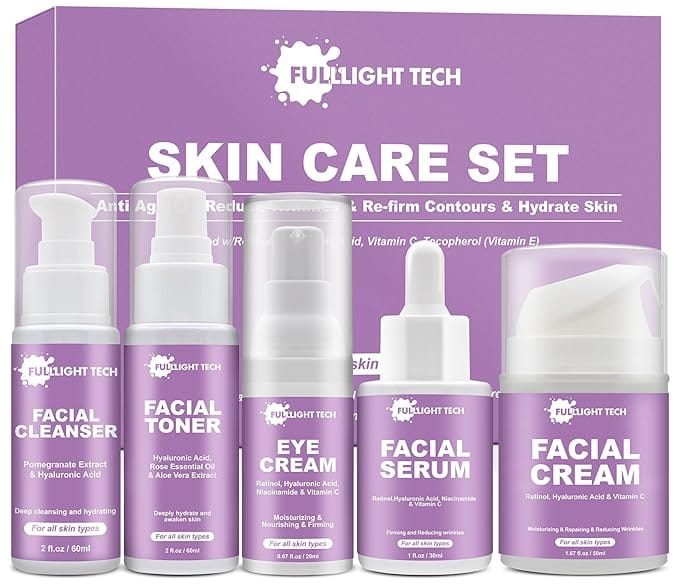
FULLLTECH STORE Anti Aging Skin Care Routine Kit
,Reduce Wrinkles & Hydrate Skin, Facial cleanser, Toner, Cream, Serum, Eye Cream

Mario Badescu Combo/Dry Regimen 5 Piece Kit
Skincare Gift Set Includes Seaweed Cleansing Soap, Seaweed Cleansing Lotion, Hydro Moisturizer, Enzyme Revitalizing Mask, and Hyaluronic Eye Cream

Curel Japanese Skin Care Travel Size Toiletries
For Dry, Sensitive Skin, Travel Size Face Wash, Travel Size Lotion, Travel Size Makeup Remove

NxN Total Moisture 4-Step Anti-Aging Treatment & Dry Skin Facial System
Skin Care Kit with Moisturizer, Gentle Cleanser, Powder Exfoliator, Evening Face Mask - Hydrate Skin & Reduce Wrinkles
Step 7 : How to Incorporate Other Skincare Products into Your Daily Routine If You Use Treatment Acne-Prone Skin
If you have acne-prone skin, you may be using some acne treatments, such as benzoyl peroxide, salicylic acid, or retinoids, to help clear your breakouts and prevent new ones.
These treatments can also dry out, irritate, or sensitize your skin, making it more prone to redness, peeling, or inflammation. Therefore, you need to incorporate some skincare products in your routine that can help your skin tolerate the acne treatments better and restore its health and balance.
Here are some tips on how to incorporate skincare products in your routine if you have acne-prone treatment:
Use gentle cleansers and moisturizers
When you are using acne treatments, you need to avoid harsh or drying cleansers and moisturizers that can strip your skin of its natural oils and moisture. Instead, use gentle and hydrating cleansers and moisturizers that can cleanse and moisturize your skin without irritating it.
Look for products that are fragrance-free, oil-free, and non-comedogenic, and that contain soothing and nourishing ingredients, such as aloe vera, oatmeal, or ceramides.
Use sunscreen and antioxidants
- When you are using acne treatments, your skin can become more sensitive to the sun and more vulnerable to free radical damage.
- You need to use sunscreen and antioxidants that can protect your skin from the harmful effects of the sun and the environment.
- Use a broad-spectrum sunscreen with SPF 30 or higher every day, and reapply it every two hours or as needed.
- Look for products that are lightweight, non-greasy, and non-irritating, and that contain zinc oxide or titanium dioxide, which are physical sunscreens that can reflect the sun’s rays. For example, use EltaMD UV Clear Tinted Face Sunscreen, SPF 46 Oil Free Sunscreen for your daily sun protection.
- You can also use a serum that contains antioxidants, such as vitamin C, vitamin E, or niacinamide, which can help neutralize free radicals and boost your skin’s collagen and brightness. For example, SeoulCeuticals Korean Skin Care 20% Vitamin C Hyaluronic Acid Serum and CE Ferulic Acid for your daily antioxidant boost.
Use exfoliants and masks sparingly
- When you are using acne treatments, you need to be careful with exfoliants and masks that can further exfoliate or dry out your skin.
- Exfoliants and masks can help remove dead skin cells, unclog pores, and improve your skin’s texture and tone, but they can also cause over-exfoliation, irritation, or dehydration if used too often or too aggressively.
- Use exfoliants and masks sparingly, and only when your skin can handle them. Use gentle and chemical exfoliants, such as alpha hydroxy acids (AHAs) or beta hydroxy acids (BHAs), once or twice a week, and avoid physical or mechanical exfoliants, such as scrubs or brushes, which can damage your skin.
- Hydrating and calming masks, such as clay, honey, or yogurt, can be used once or twice a week, and avoid drying or peeling masks, such as charcoal, alcohol, or salicylic acid, which can strip your skin of its moisture. For example, you can use The Ordinary Lactic Acid 10% + HA5 for your weekly exfoliation, and use Aztec Secret Indian Healing Clay for your weekly mask.
By following these tips, you can incorporate skincare products in your routine that can help your skin cope with the acne treatments and improve its appearance and function.

TULA Skin Care Clear Skin Starters Acne & Blemish Fighting Discovery Kit
Foam Cleanser, Gel, Moisturizer, Treatment Mask and Travel Bag to Treat & Prevent Acne, 4-Piece Kit
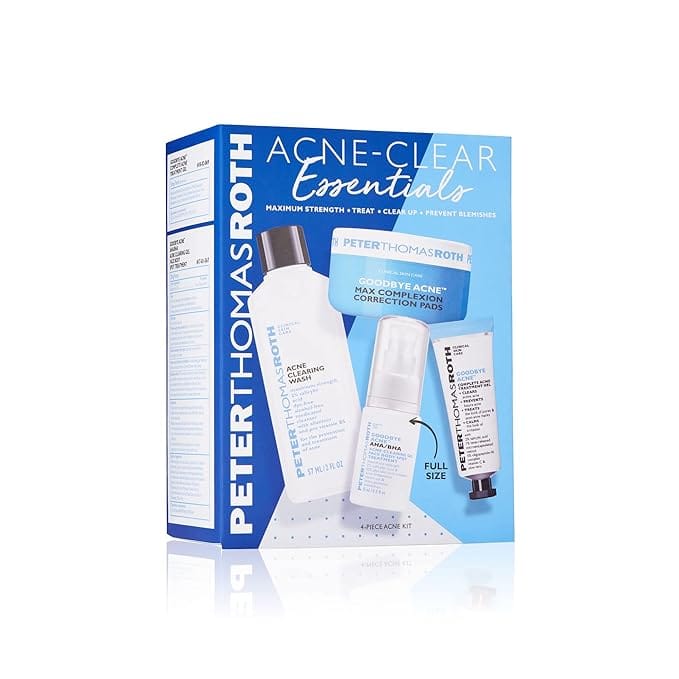
Peter Thomas Roth Acne-Clear Essentials 4-Piece Acne Kit
Maximum-Strength Acne Products, Skin Care Kit for Acne-Prone Skin

Mario Badescu Acne Starter Kit
Control/Repair Skin Care Kit for All Types of Breakouts. Facial Set Ideal for Combination or Oily Face for Healthy, Clear Complexion
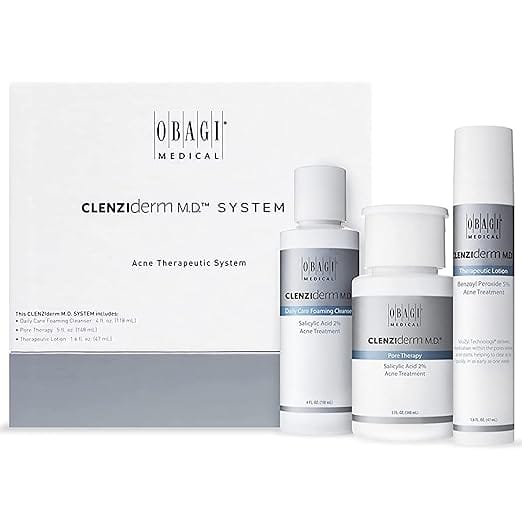
Obagi Medical CLENZIderm M.D. System
Daily Care Foaming Cleanser Salicylic Acid 2% Acne Treatment (4 Fl Oz), Pore Therapy Salicylic Acid 2% Acne Treatment (5 Fl Oz), Therapeutic Lotion Benzoyl Peroxide 5% Acne Treatment (1.6 Fl Oz).
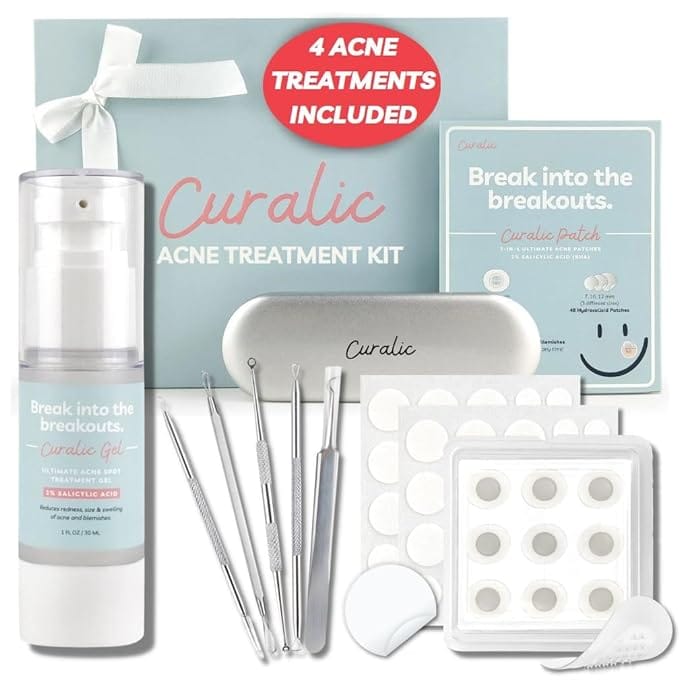
Curalic Acne Treatment Kit
Value Pack - 57 Count) - 48 Hydrocolloid Pimple Patches For Face, 9 Microdart Acne Patches, 2% Salicylic Acid Acne Spot Treatment Cream, Pimple Popper Tool Kit
Step 8 : When to Use Retinol, Retinoids, HA and When to Use Eye Cream
Retinol and retinoids
Retinol, retinoids, and Hyaluronic Acid (HA) are some of the most popular and effective ingredients in skin care products. They can help improve your skin’s appearance and health by reducing the signs of aging, such as wrinkles, dark spots, and sagging. They can also unclog pores and prevent breakouts. and can help treat acne and other skin conditions.
Retinol and retinoids are forms of vitamin A that can stimulate the turnover of skin cells and boost the production of collagen and elastin.
Potential Side effects
Retinols' can cause some side effects, such as dryness, irritation, or sensitivity, if used incorrectly or excessively. They can also make your skin more sensitive to the sun and more prone to peeling or flaking.
How to use Retinol
Retinols' are best used at night, after cleansing and toning your skin. You should also start with a low concentration and frequency, and gradually increase them as your skin adapts. Be sure to use a moisturizer and a sunscreen to protect your skin from dryness and sun damage.
Hyaluronic Acid for your Skin
Hyaluronic Acid, is a substance that can attract and retain water in your skin. It can help hydrate and plump your skin, making it look smoother and firmer. It can also help reduce inflammation and redness.
Potential Side effects
HA, like retinols', can also cause some side effects, such as dryness, irritation, or sensitivity, if used incorrectly or excessively. They can also make your skin more sensitive to the sun and more prone to peeling or flaking.
How to use Hyaluronic Acid
HA should be used it in the morning and at night, after cleansing and toning your skin and before applying your moisturizer. You should also look for products that have a low molecular weight and a high concentration of HA, as they can penetrate deeper into your skin and deliver more benefits.
Read more: A Complete Guide To Hyaluronic Acid: A Must Read For Choosing Quality Products; The Ultimate Guide To Finding The Best Retinol Body Cream
Eye Cream in your Skincare Routine
Eye cream is a product that can help moisturize and nourish the delicate skin around your eyes. It can help reduce the appearance of fine lines, dark circles, and puffiness.
It can also help prevent the signs of aging and protect your eyes from environmental stressors. However, it can also cause irritation or sensitivity if used too much or too close to your eyes.
Therefore, you should use it in the morning and at night, after applying your serum and before applying your moisturizer. You should also use a small amount and gently dab it around your eyes, avoiding the eyelids and the lash line.
Read more: 10 Must-Try Eyelift Creams That Will Give You A Brighter, More Youthful Look, 5 Surprising Hacks To Banish Dark Circles And Reveal A Radiant Sparkle
Step 9: Consistently Follow Your Daily Skin Care Routine
The last step to start a skincare routine is to follow it consistently. Having a skincare routine is not enough, you need to stick to it every day to see the results. Here is how to follow your skincare routine depending on the time of the day:
- Morning: In the morning, you want to cleanse your skin, moisturize it, and protect it from the sun. Start by washing your face with your cleanser and lukewarm water. Gently massage your skin in circular motions and rinse it off. Pat your skin dry with a soft towel and apply your moisturizer. Wait for a few minutes and then apply your sunscreen. You are now ready to face the day with a clean, hydrated, and protected skin.
- Night: At night, you want to cleanse your skin, moisturize it, and repair it while you sleep. Start by removing your makeup with a makeup remover or a micellar water. Then, wash your face with your cleanser and lukewarm water. Gently massage your skin in circular motions and rinse it off. Pat your skin dry with a soft towel and apply your moisturizer. You can also use a night cream instead of your regular moisturizer, as it can have more active ingredients and benefits for your skin. You are now ready to go to bed with a clean, hydrated, and nourished skin.
Step 10 : Tools that can be used for a Daily Skin Care Routine
Some tools that are commonly used for skincare include:
1. Cleansers: Used to remove dirt, oil, and makeup from the skin.
2. Exfoliators: Used to remove dead skin cells and improve skin texture.
3. Moisturizers: Used to hydrate and nourish the skin.
4. Sunscreen: Used to protect the skin from harmful UV rays.
5. Serums: Used to target specific skin concerns such as wrinkles, dark spots, or acne.
6. Face masks: Used to treat specific skin concerns or for relaxation.
7. Facial cleansing brushes or devices: Used to cleanse the skin more effectively.
8. Jade rollers or gua sha tools: Used to massage the skin and improve circulation.
9. Facial steamers: Used to open pores and enhance the penetration of skincare products.
10. Microcurrent devices: Used to tone and tighten the skin.
These tools can be used as part of a skincare routine tailored to individual type of skin and concerns, and can help keep the skin looking healthy and radiant.
Read more: The Ultimate Guide to the 10 Best Ceramide Face Moisturizers for 2024, Top 10 Organic Anti-Aging Creams for Men with Mature Skin: Best Moisturizers, 12 Best Microcurrent Facial Devices: Your Salon-Worthy Skincare Routine at Home
Takeaways
Starting a skincare routine can seem overwhelming, but it doesn’t have to be. By following these simple steps, you can create a skincare routine that works for you and your skin.
Remember to know your type of skin, choose your products wisely, and follow your routine every day. You will soon notice the difference in your skin and feel more confident and beautiful. Happy skin care! 😊
FAQs
Basic Skincare Routine, Products, and Healthy Skin
1. What is a basic skincare routine?
A basic skincare routine consists of essential steps that are tailored to your skin type and skin concerns. It typically includes cleansing, toning, and moisturizing, and may involve additional steps depending on specific skin concerns. There is also a difference in a morning and evening skincare routine.
2. How do I determine my skin type?
Understanding your skin type is crucial for a healthy skincare routine. You can identify your skin type by observing whether you have dry, oily, combination, or sensitive skin. Your skin type is determined by how much oil your skin produces, how sensitive it is, and how prone it is to breakouts.This knowledge helps cater to your skin's needs effectively.
3. What are the best products for sensitive skin?
Sensitive skin requires gentle and hypoallergenic skincare products that will not irritate your skin. Look for products labeled as fragrance-free, paraben-free, and alcohol-free to protect your skin and prevent any adverse reactions.
4. What does a good skincare routine for dry skin involve?
A skincare routine for dry skin should focus on moisturizing and hydration. Use rich and nourishing creams to restore moisture and keep your skin looking healthy and supple throughout the day and night.
5. How can I manage oily skin in my skincare routine?
One of the key steps in caring for oily skin is cleansing. It is crucial to cleanse your skin thoroughly to remove excess oil, dirt, and impurities that can clog your pores and lead to breakouts. Look for cleansers specifically formulated for oily skin, as they are designed to effectively remove oil without stripping away essential moisture. Opt for oil-free and non-comedogenic products, as they won't clog your pores and will help balance your skin's natural oil production.
In addition to cleansing, incorporating exfoliation into your skincare routine can also benefit oily skin. Exfoliating regularly helps to remove dead skin cells and unclog pores, allowing your skin to breathe and preventing the buildup of oil and impurities. However, be gentle when exfoliating, as aggressive scrubbing can irritate the skin and trigger more oil production. Look for gentle exfoliants with ingredients like salicylic acid or fruit enzymes that can effectively remove dead skin cells without causing any harm. Remember to follow up with a lightweight, oil-free moisturizer to keep your skin hydrated without adding any unnecessary shine.
6. Do I need a face oil? Won't it cause breakout?
Face oil is a skin care product that can moisturize, nourish, and protect your skin. However, not all face oils are suitable for all skin types, and some may cause breakouts if used incorrectly or excessively. Here are some factors to consider when choosing and using face oil:
- Your skin type: Your skin type is determined by how much oil your skin produces, how sensitive it is, and how prone it is to breakouts. Depending on your skin type, you may need a different type of face oil. For example, if you have dry skin, you may benefit from a rich and creamy face oil that can hydrate and soothe your skin. If you have oily skin, you may prefer a light and non-comedogenic face oil that can moisturize and regulate your skin. If you have combination skin, you may need a balanced and refreshing face oil that can hydrate and mattify your skin. If you have sensitive skin, you may need a gentle and hypoallergenic face oil that can calm and protect your skin.
- The ingredients: The ingredients of the face oil can also affect how it works and feels on your skin. Some ingredients are beneficial for your skin, while others may be harmful or irritating. For example, some natural or plant-based oils, such as rosehip, jojoba, or argan oil, can help improve your skin’s appearance and health by providing antioxidants, vitamins, and fatty acids. However, some synthetic or mineral oils, such as petrolatum, mineral oil, or lanolin, can clog your pores and cause breakouts. You should always read the label and the ingredients list of the face oil before buying or using it, and avoid any ingredients that you are allergic or sensitive to.
- The amount and frequency: The amount and frequency of using face oil can also influence how it affects your skin. Generally, less is more when it comes to face oil, as using too much or too often can create an oil film that prevents your skin from breathing and may lead to clogged pores and breakouts. You should only use a few drops of face oil per application, and only apply it once or twice a day, preferably at night. You should also massage the face oil gently into your skin, and wait for a few minutes before applying any other products, such as moisturizer or sunscreen.
By following these tips, you can use face oil safely and effectively, and enjoy its benefits and results.
Source
- Indian Journal of Dermatology. Sethi, Anisha, et.al. May 2016, 61(3): 279–287. Moisturizers: The Slippery Road. https://www.ncbi.nlm.nih.gov/pmc/articles/PMC4885180/. Accessed 26/12/2023




